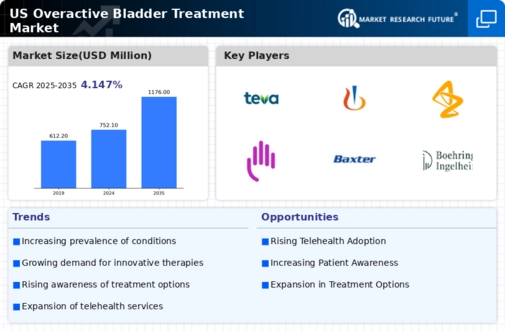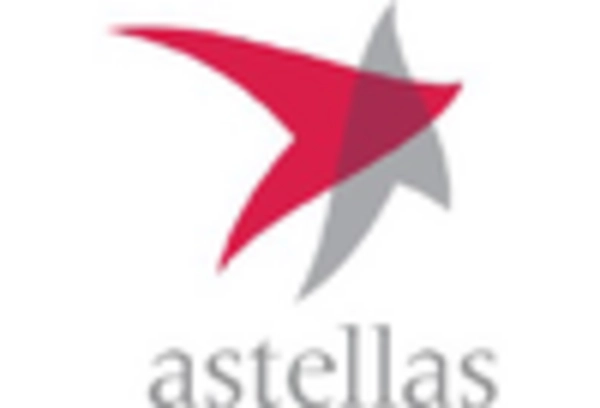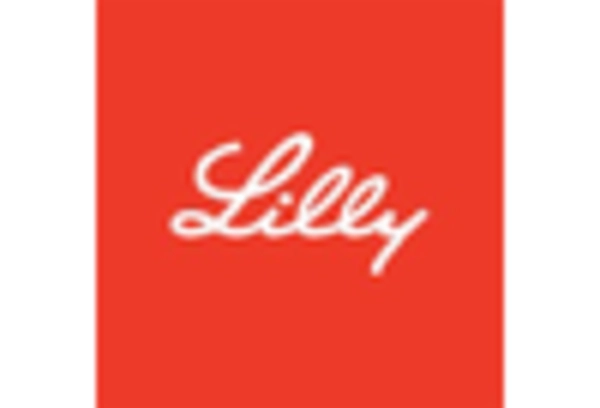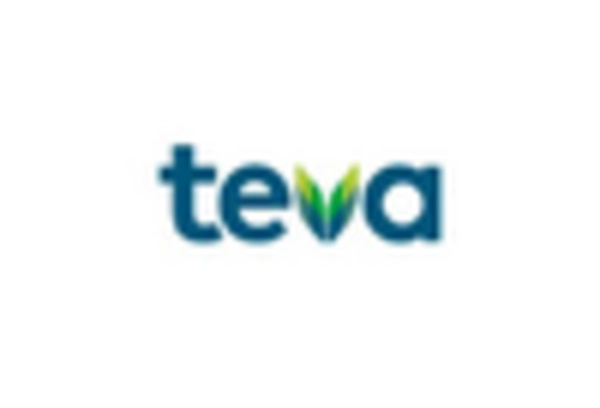Rising Healthcare Expenditure
The increase in healthcare expenditure in the US is a significant driver for the overactive bladder-treatment market. As healthcare budgets expand, there is greater investment in urology and related specialties, leading to improved access to treatment options for patients. The US healthcare spending is projected to reach $6 trillion by 2027, which may facilitate the development and distribution of advanced therapies for OAB. This financial commitment allows for better diagnostic tools, treatment modalities, and patient education initiatives. Consequently, the overactive bladder-treatment market is likely to benefit from enhanced resources and support, ultimately improving patient care and outcomes.
Advancements in Pharmaceutical Research
Innovations in pharmaceutical research are significantly impacting the overactive bladder-treatment market. The development of new medications, including anticholinergics and beta-3 adrenergic agonists, has expanded treatment options for patients. Recent data suggests that the market for OAB medications is projected to reach approximately $3 billion by 2026, driven by these advancements. Additionally, ongoing clinical trials are exploring novel compounds that may offer improved efficacy and reduced side effects. This continuous evolution in drug development not only enhances patient outcomes but also stimulates market growth as healthcare providers adopt new therapies. The overactive bladder-treatment market is thus benefiting from a robust pipeline of innovative pharmaceutical solutions.
Increasing Prevalence of Overactive Bladder
The rising incidence of overactive bladder (OAB) in the US is a primary driver for the overactive bladder-treatment market. Studies indicate that approximately 16 % of adults in the US experience symptoms of OAB, which translates to millions of individuals seeking treatment. This growing patient population necessitates the development and availability of effective treatment options. As awareness of OAB increases, more individuals are likely to seek medical advice, thereby expanding the market. Furthermore, the aging population, which is more susceptible to urinary disorders, contributes to the increasing prevalence. The overactive bladder-treatment market is thus poised for growth as healthcare providers respond to the rising demand for effective management solutions.
Enhanced Patient Education and Support Programs
The establishment of comprehensive patient education and support programs is driving growth in the overactive bladder-treatment market. These initiatives aim to inform patients about OAB symptoms, treatment options, and lifestyle modifications. Increased awareness leads to earlier diagnosis and treatment, which is crucial for effective management. Healthcare providers are increasingly implementing educational resources, workshops, and support groups to empower patients. This proactive approach not only improves patient engagement but also fosters a more informed patient population. As a result, the overactive bladder-treatment market is likely to see an uptick in demand as patients become more knowledgeable and proactive in seeking treatment.
Growing Demand for Non-Invasive Treatment Options
There is a notable shift towards non-invasive treatment options in the overactive bladder-treatment market. Patients increasingly prefer therapies that minimize surgical risks and recovery times. Non-invasive treatments, such as neuromodulation and behavioral therapies, are gaining traction as effective alternatives to traditional surgical interventions. This trend is supported by a growing body of evidence demonstrating the efficacy of these methods. As a result, healthcare providers are more likely to recommend these options, leading to an increase in market adoption. The overactive bladder-treatment market is thus evolving to meet patient preferences for less invasive, yet effective, management strategies.

















Leave a Comment